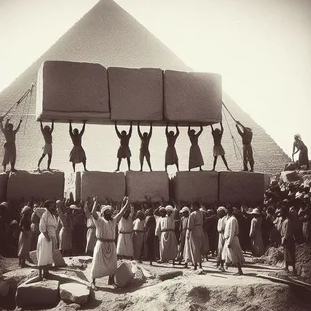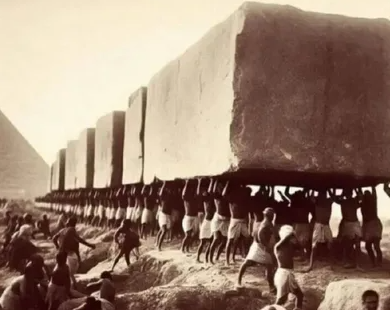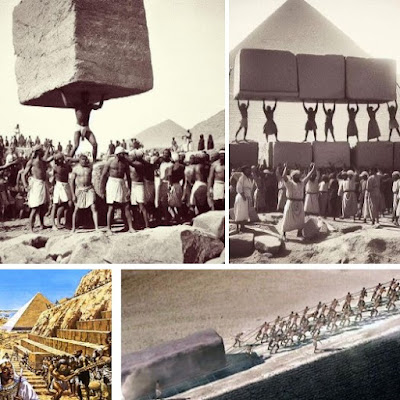
The Great Pyramids of Egypt, constructed around 2600 BC, stand as monumental testaments to ancient engineering and architectural prowess.While no official photographs exist from that era, envisioning such images invites us to explore the grandeur of this incredible feat. Imagine a bustling site on the Giza Plateau, with thousands of laborers working diligently under the scorching sun. Some men are hauling massive limestone blocks, each

weighing several tons, while others skillfully maneuver wooden sledges across the sandy terrain, their faces marked by sweat and determination.As we observe, the towering pyramid structure begins to take shape, each layer meticulously placed by skilled craftsmen. Workers, dressed in simple linen garments, communicate in a blend of hieroglyphs and practical gestures, their camaraderie palpable as they toil side by side. In the background,

overseers, possibly scribes, document the progress, their papyrus scrolls filled with detailed records of labor and materials.Surrounding the construction site, the horizon is dotted with the majestic pyramids of earlier pharaohs, hinting at a long tradition of monumental architecture. In this imagined scene, the presence of sacred symbols and

artifacts, perhaps ankh-shaped amulets or small statues of the gods, remind us of the spiritual significance of this endeavor. This vivid tableau encapsulates not just the physical labor but also the cultural and religious fervor that drove the ancient Egyptians to create one of the most enduring wonders of the world.



